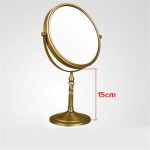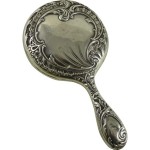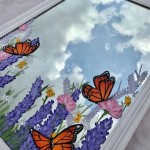Replace A Bathroom Cabinet Mirror
Bathroom cabinet mirrors often become outdated or damaged over time, necessitating replacement. This seemingly simple task can be accomplished with a few basic tools and careful planning. This article provides a comprehensive guide to replacing a bathroom cabinet mirror, covering the removal of the old mirror, preparation of the cabinet, and installation of the new one.
Safety First
Working with glass requires prioritizing safety. Always wear appropriate safety glasses to protect eyes from potential glass shards. Thick work gloves are also recommended to protect hands from sharp edges and provide a better grip. If the existing mirror is cracked or broken, extra caution should be employed. Covering the damaged mirror with packing tape can help contain the shards during removal.
Removing the Old Mirror
The method for removing the old mirror depends on how it's attached to the cabinet. Mirrors are commonly attached with clips, adhesive, or a combination of both. If clips are used, carefully unscrew or unclip them. For adhesive-backed mirrors, a putty knife or thin pry bar can be used to gently separate the mirror from the cabinet. Start in a corner and slowly work the tool behind the mirror, applying even pressure to avoid cracking the glass. A heat gun can be used to soften the adhesive, making removal easier. If the mirror is stubbornly adhered, seeking professional assistance is recommended to minimize the risk of damage to the cabinet.
Once the mirror is detached, carefully lift and remove it from the cabinet. If working with a large or heavy mirror, having a helper assist is recommended. Dispose of the old mirror properly, wrapping it in thick cardboard or placing it in a designated container for broken glass.
Preparing the Cabinet
With the old mirror removed, prepare the cabinet surface for the new mirror. Remove any remaining adhesive residue with a scraper or adhesive remover. Ensure the surface is clean and dry before proceeding with the installation. If the cabinet surface is damaged or uneven, repairs may be necessary to ensure a proper fit for the new mirror.
Measure the opening for the new mirror precisely. Accurate measurements are crucial for ordering the correct size replacement. Consider the type of mounting system for the new mirror. If using clips, ensure they are compatible with the cabinet and the new mirror. If using adhesive, choose a high-quality mirror adhesive specifically designed for bathroom environments. The adhesive should be waterproof and able to withstand the humidity and temperature fluctuations common in bathrooms.
Installing the New Mirror
If using clips, position them on the cabinet according to the manufacturer’s instructions. Carefully insert the new mirror into the clips, ensuring it is secure and level. For adhesive installations, apply the adhesive to the back of the mirror in an even pattern. Follow the adhesive manufacturer’s instructions for application and drying times. Carefully position the mirror on the cabinet, applying even pressure to ensure proper adhesion. Use painter’s tape to secure the mirror in place while the adhesive cures.
Choosing the Right Replacement Mirror
Selecting the right replacement mirror involves considering several factors, including size, shape, and style. Measure the existing mirror opening carefully to ensure the new mirror fits properly. Consider the overall bathroom design when choosing the shape and style of the mirror. Frameless mirrors offer a sleek, modern look, while framed mirrors can add a decorative touch. Mirrors with beveled edges add a touch of elegance. Explore various options to find a mirror that complements the bathroom’s aesthetics.
Types of Mirror Glass
The type of glass used in a bathroom mirror can also impact its longevity and performance. Standard mirrors are made with float glass, which provides clear reflections. Consider upgrading to a higher-quality mirror glass, such as low-iron glass, which minimizes the green tint sometimes seen in standard mirrors. For added safety, tempered glass is recommended. Tempered glass is more resistant to breakage and shatters into small, relatively harmless pieces if broken.
Lighting Considerations
The placement and type of lighting around the bathroom mirror significantly impact its functionality. Consider installing vanity lights above or on either side of the mirror to provide even illumination. Avoid placing lights directly above the mirror, as this can create shadows. Choose light fixtures that complement the bathroom’s style and provide adequate light for grooming tasks.

Bathroom Medicine Cabinet Mirror Replacement Doityourself Com Community Forums

How To Turn A Mirror Into Medicine Cabinet Diy Bathroom

Why Designers Most Medicine Cabinets Some Genius Alternative Bathroom Storage Solutions Emily Henderson

How To Install A Mirrored Medicine Cabinet Vanity Light

Ideas To Update A 60 S Mirror Medicine Cabinet Hometalk

Medicine Cabinets Ideas 7 Diy Updates Bob Vila

Medicine Cabinets Ideas 7 Diy Updates Bob Vila

Old Medicine Cabinet Gets A Facelift For 30 Bathroom Mirrors Diy Cabinets Mirror

How To Remove A Medicine Cabinet Kay S Place

Frame Update To Medicine Cabinet Atop Serenity Hill Bathroom Mirrors Diy Mirror








